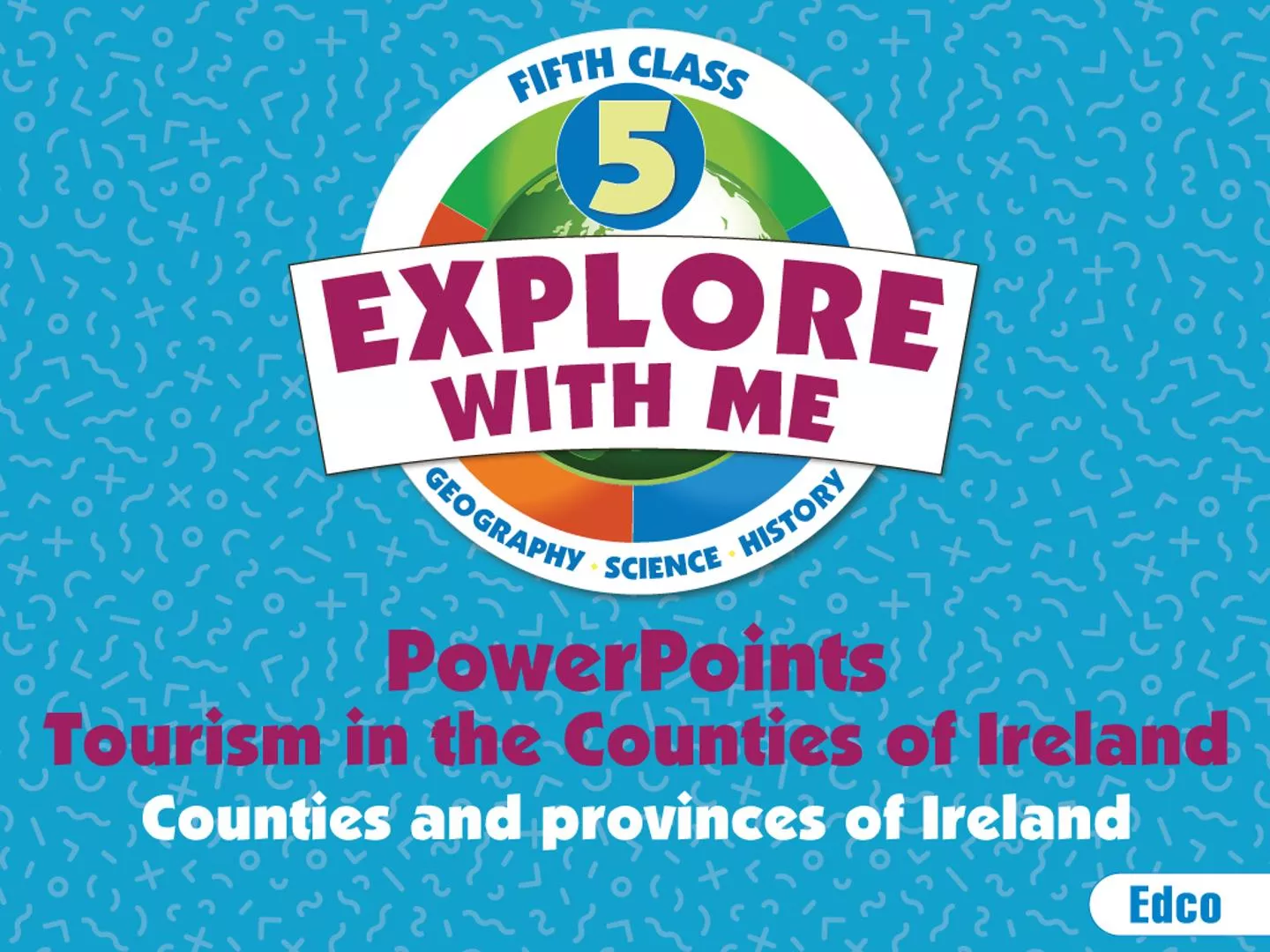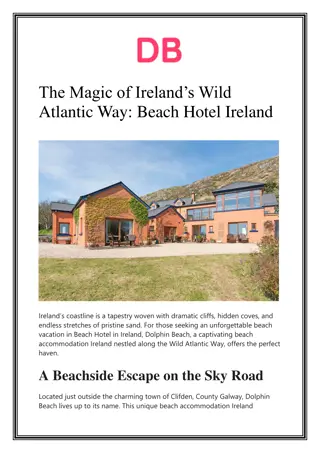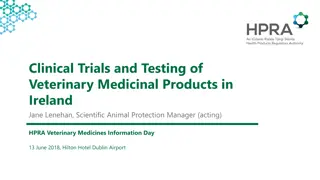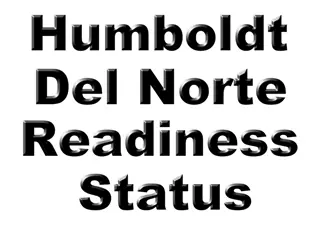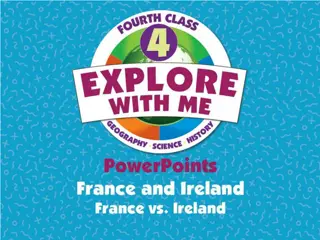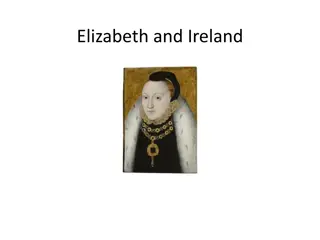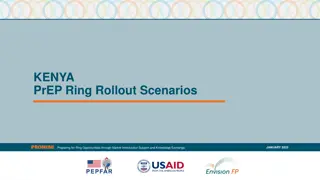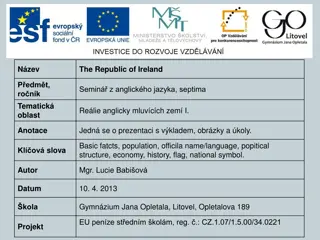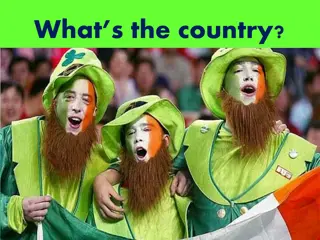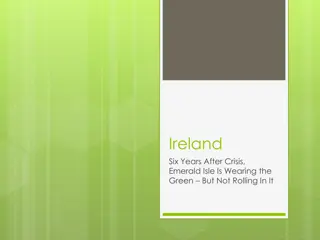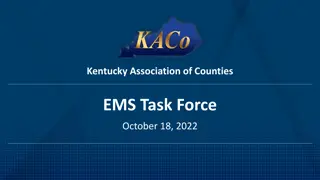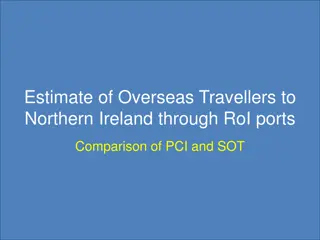Overview of Counties in Ireland
Ireland is divided into 32 counties, with 26 in the Republic of Ireland and six in Northern Ireland. The counties have unique names derived from Irish origins, often reflecting features of the landscape. Each county has a designated county town, housing important facilities. The country is historically divided into provinces, with Munster, Connacht, Leinster, and Ulster each comprising a set of counties. Munster is the largest province, containing six counties, while Leinster has 12 counties. Connacht has five counties, including maritime ones, and Ulster comprises nine counties, three of which are in the Republic of Ireland.
Download Presentation

Please find below an Image/Link to download the presentation.
The content on the website is provided AS IS for your information and personal use only. It may not be sold, licensed, or shared on other websites without obtaining consent from the author.If you encounter any issues during the download, it is possible that the publisher has removed the file from their server.
You are allowed to download the files provided on this website for personal or commercial use, subject to the condition that they are used lawfully. All files are the property of their respective owners.
The content on the website is provided AS IS for your information and personal use only. It may not be sold, licensed, or shared on other websites without obtaining consent from the author.
E N D
Presentation Transcript
Counties of Ireland Counties are geographical areas within a country. There are 32 counties on the island of Ireland 26 in the Republic of Ireland and six in Northern Ireland.
Counties of Ireland The county boundaries in Ireland were set long ago. The names of the counties come from their original Irish names, which often refer to features in the landscape.
Counties of Ireland For example, the name Dublin comes from Dubh Linn , meaning black pool . It is thought that this referred to a dark-coloured tidal pool close to Dublin Castle.
Counties of Ireland Each county has an official county town. Here you usually find important buildings such as local authority offices, a library, a garda station, a hospital and shops. Some county towns are officially cities. Dublin is Ireland s largest city and its capital.
Counties of Ireland A long time ago, Ireland was divided up into the four provinces of Connacht, Leinster, Munster and Ulster.
Munster Munster is the largest province by area. There are six counties in Munster: Clare, Kerry, Cork, Limerick, Tipperary and Waterford. Cork is the largest county in Ireland.
Connacht There are five counties in Connacht: Roscommon, Leitrim, Sligo, Mayo and Galway. Sligo, Mayo and Galway are maritime counties, which means that they have a coastline.
Ulster There are nine counties in Ulster. Three of these are in the Republic: Donegal, Monaghan and Cavan. The other six form Northern Ireland: Antrim, Armagh, Derry, Down, Fermanagh and Tyrone.
Leinster Leinster has 12 counties: Louth, Meath, Dublin, Wicklow, Wexford, Carlow, Kilkenny, Laois, Offaly, Kildare, Westmeath and Longford. Louth is the smallest county in Ireland.
The importance of tourism In recent years, the counties of Ireland have been collaborating in order to attract more visitors to their region and improve job opportunities for all. F ilte Ireland worked with the local authorities of the counties within a region.
The importance of tourism Together, they came up with a regional tourist experience brand . The aim was to boost tourism throughout the year and encourage tourists to explore places they might otherwise have ignored.
The Wild Atlantic Way The first regional experience brand was the Wild Atlantic Way, which highlighted the rugged landscape of the west coast.
Inter-county collaboration Ireland s Ancient East was created for the counties in the east, highlighting their monuments and history. (Dublin has its own brand.)
Inter-county collaboration Ireland s Hidden Heartlands promoted the Shannon counties as being off the beaten track highlighting that they were relatively undiscovered by tourists.
Inter-county collaboration The counties of Northern Ireland are promoted under the Visit Northern Ireland brand.
Illustrations Shutterstock Beehive


